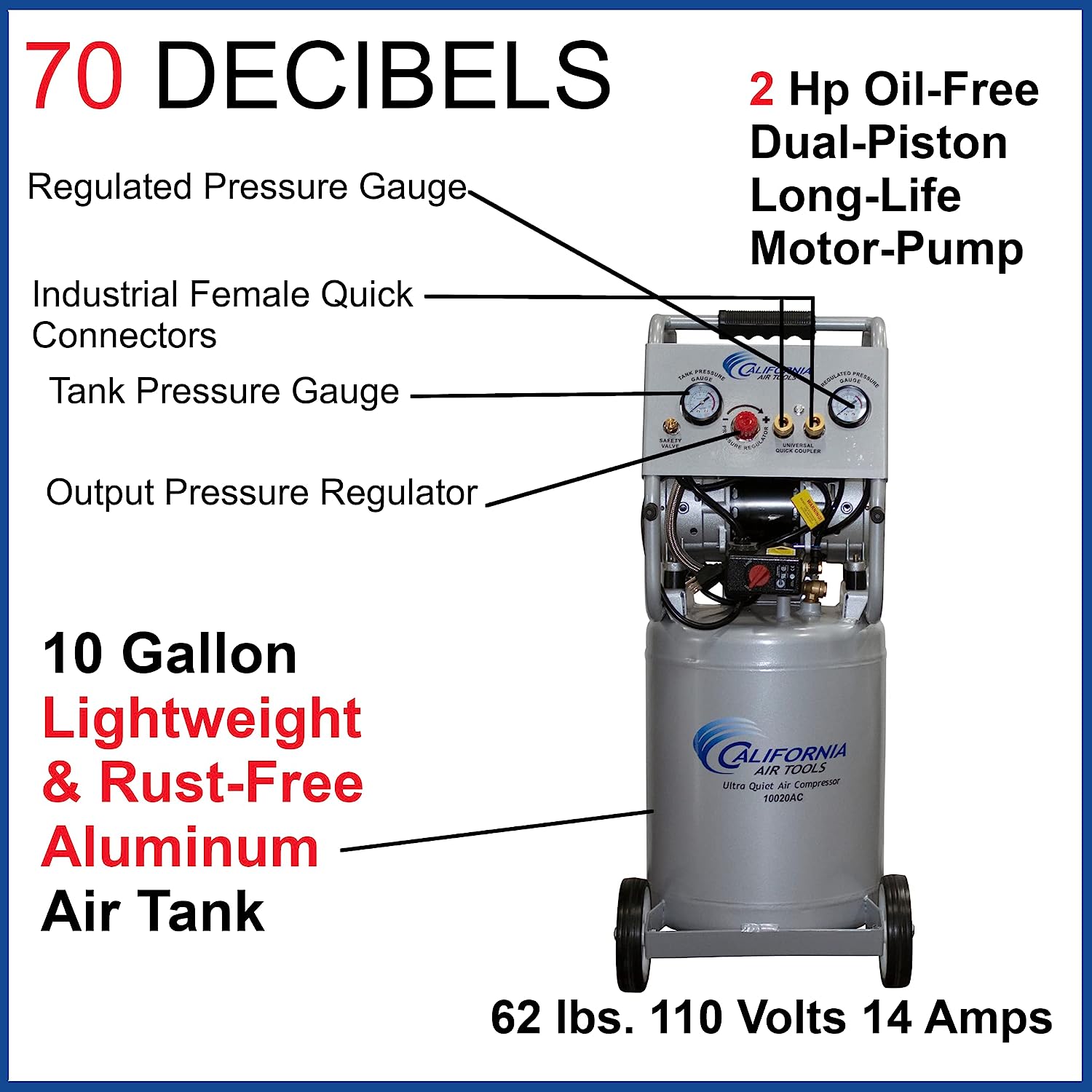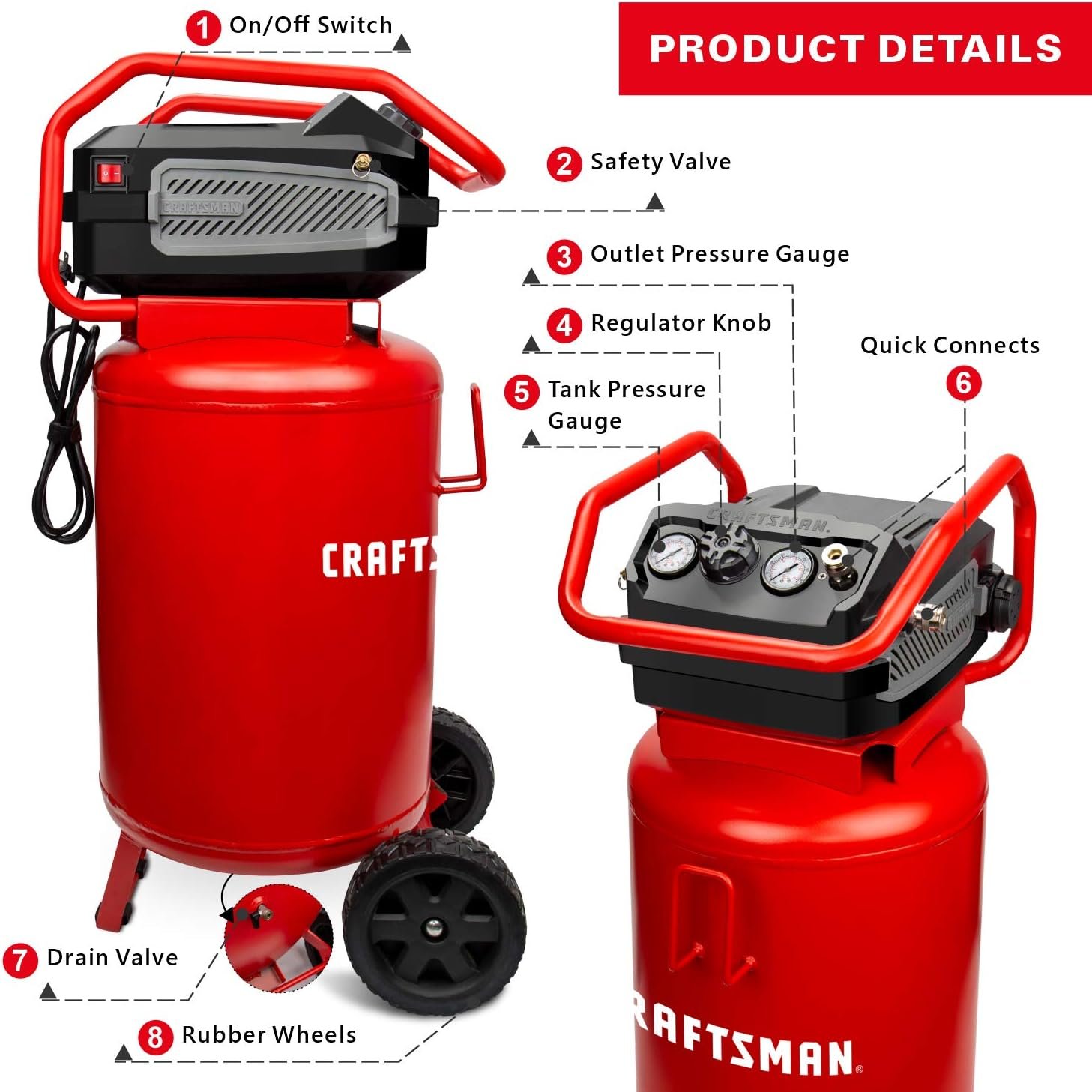Are you curious about the latest advancements in air compressor technology for 2023? Look no further! In this article, we will explore the exciting developments in this field that are revolutionizing the way compressors operate. From increased efficiency to enhanced performance, these advancements are sure to make a significant impact on various industries. So, let’s dive right in and discover how air compressor technology is evolving to meet future demands.
Advancements in Air Compressor Technology for 2023
Air compressor technology continues to advance at a rapid pace, with numerous innovations and developments shaping the industry. In this article, we will explore the latest advancements in air compressor technology for 2023. From oil-free air compressors to smart systems and IoT integration, these advancements aim to improve efficiency, reduce energy consumption, and enhance overall performance.
1. Oil-Free Air Compressors
1.1 Introduction to Oil-Free Air Compressors
Oil-free air compressors have gained popularity in various industries due to their numerous benefits and the elimination of potential oil contamination. These compressors operate without needing oil lubrication, significantly reducing maintenance requirements and potential risks associated with oil contamination.
1.2 Benefits of Oil-Free Air Compressors
One of the main advantages of oil-free air compressors is their ability to deliver clean, high-quality compressed air. This makes them suitable for applications where air purity is crucial, such as in the pharmaceutical, food and beverage, and electronics industries. Additionally, oil-free compressors reduce the need for oil changes and disposal, resulting in cost savings and environmental benefits.
1.3 Latest Developments in Oil-Free Air Compressors
There have been significant developments in oil-free air compressor technology in recent years. These include integrating advanced filtration systems to ensure optimal air quality, improved efficiency through advanced compressor designs, and implementing intelligent control systems for better performance monitoring and maintenance scheduling. These advancements contribute to enhanced reliability, productivity, and overall performance of oil-free air compressors.
2. Variable Speed Drive Technology
2.1 Introduction to Variable Speed Drive Technology
Variable Speed Drive (VSD) technology allows air compressors to adjust their motor speed based on the demand for compressed air. Unlike traditional fixed-speed compressors, VSD compressors can operate at varying speeds, matching their output to the requirements of the application.
2.2 Advantages of Variable Speed Drive Technology
The advantages of VSD technology in air compressors are manifold. Firstly, VSD compressors offer significant energy savings by matching the compressed air supply to the actual demand, reducing unnecessary energy consumption. Secondly, the ability to vary the motor speed results in smoother and quieter operation, reducing noise pollution in the workplace. Lastly, VSD compressors allow for better control and stability in maintaining consistent air pressure, resulting in improved process efficiency.
2.3 Recent Innovations in Variable Speed Drive Technology
The latest advancements in VSD technology for air compressors involve the integration of smart control algorithms and advanced sensor technologies. These innovations enable real-time monitoring of air demand, motor speed adjustments for optimal energy efficiency, and predictive maintenance capabilities. Additionally, advancements in VSD technology have led to improved motor designs that offer better efficiency and durability, further enhancing the overall performance and longevity of variable speed drive air compressors.
3. Smart Air Compressor Systems
3.1 Introduction to Smart Air Compressor Systems
Smart air compressor systems leverage the power of digital connectivity and automation to optimize performance, increase efficiency, and enhance remote monitoring and control capabilities. These systems encompass various technologies such as IoT integration, data analytics, and cloud-based platforms to provide advanced insights into compressor operation.
3.2 Features and Benefits of Smart Air Compressor Systems
Smart air compressor systems offer a range of features designed to improve functionality and performance. Remote monitoring and control enable real-time access to compressor data, facilitating proactive maintenance and reducing downtime. Data analytics provide valuable insights into compressor efficiency, enabling users to identify potential energy savings and optimize compressed air usage. Furthermore, predictive maintenance capabilities allow for the early detection of potential issues, enhancing reliability and minimizing unscheduled downtime.
3.3 Advances in Smart Air Compressor Systems
The continuous development of smart air compressor systems has seen the integration of cutting-edge technology. These include advanced machine learning algorithms that can predict and prevent failures, integration with enterprise resource planning (ERP) systems for streamlined maintenance scheduling, and cloud-based platforms that enable centralized monitoring and control of multiple compressors across different locations. These advances in smart air compressor systems optimize efficiency, improve reliability, and ultimately reduce operational costs.
4. High-Efficiency Motors
4.1 Introduction to High-Efficiency Motors
High-efficiency motors are designed to minimize energy losses and improve overall compressor efficiency. These motors employ advanced technologies and designs to maximize energy conversion and reduce heat generation.
4.2 Advantages of High-Efficiency Motors
The primary advantage of high-efficiency motors in air compressors is their ability to reduce energy consumption and operating costs significantly. These motors are designed to operate at higher efficiencies, converting more electrical energy into useful mechanical power. Additionally, high-efficiency motors produce less heat, which benefits the overall performance and lifespan of the compressor.
4.3 Latest Developments in High-Efficiency Motors
The latest developments in high-efficiency motors for air compressors include the use of advanced materials and design optimizations. These advancements contribute to improved power density, reduced energy losses, and enhanced thermal management. Furthermore, the integration of intelligent motor control systems and variable speed drive technology further enhances the efficiency and performance of high-efficiency motors in air compressors.
5. Portable and Compact Designs
5.1 Introduction to Portable and Compact Designs
Portable and compact air compressors have become increasingly popular due to their versatility and ease of use. These designs prioritize portability and space efficiency without compromising performance and functionality.
5.2 Benefits of Portable and Compact Air Compressors
The benefits of portable and compact air compressors are evident in various applications. Their lightweight and compact nature make them highly portable, allowing for easy transportation and maneuverability on job sites. These compressors are also space-saving, making them ideal for environments with limited space. Furthermore, advancements in compact designs have not compromised performance, ensuring efficient operation and reliable compressed air supply.
5.3 Recent Innovations in Portable and Compact Designs
Recent innovations in portable and compact air compressors include the use of advanced materials for lighter construction, ergonomic designs for improved user experience, and enhanced durability for increased longevity. Additionally, developments in compressor technology have led to quieter operation and reduced vibrations, further enhancing the usability and versatility of portable and compact designs.
Joey has over 15 years of experience in the air compressor industry. As a senior test manager at Pneumatic Performance Labs, he oversees all testing and evaluation of air compressors. Known for his technical expertise and leadership, Joey has built a strong team of engineers who provide trusted third-party testing capabilities to air compressor companies nationwide.










